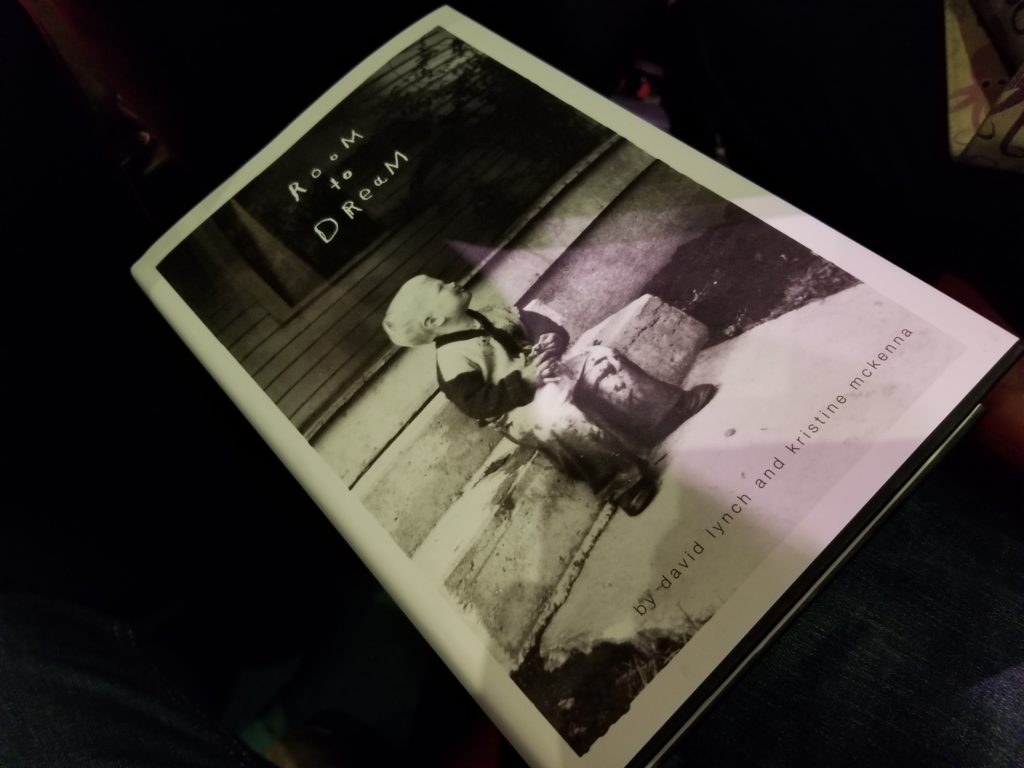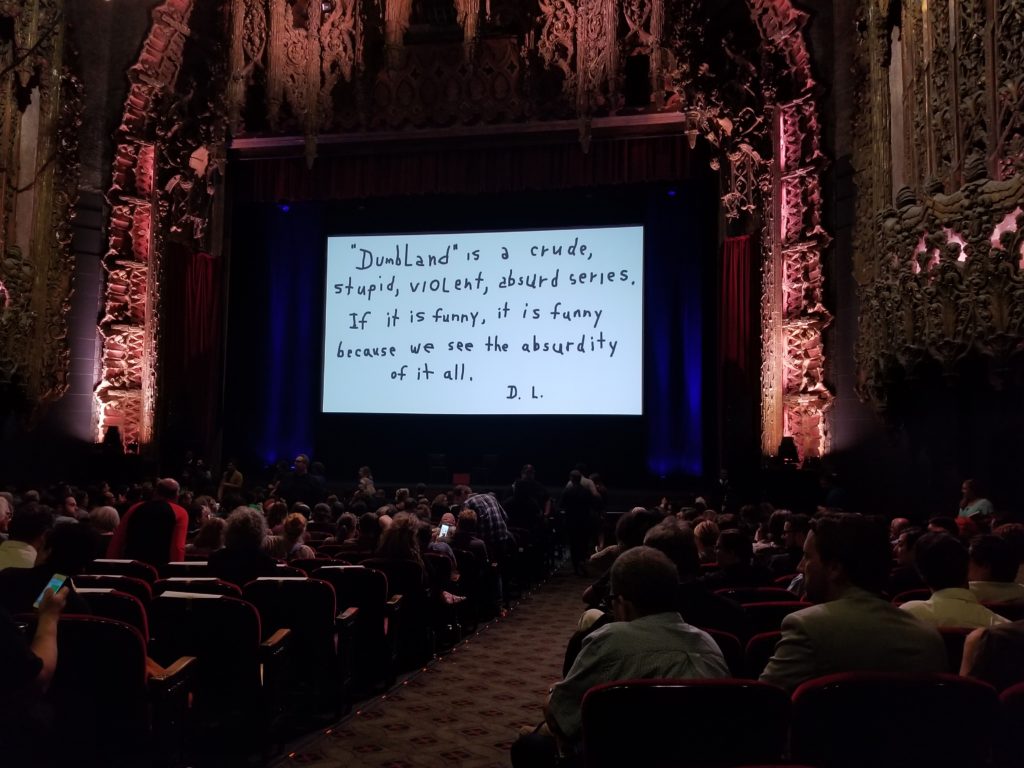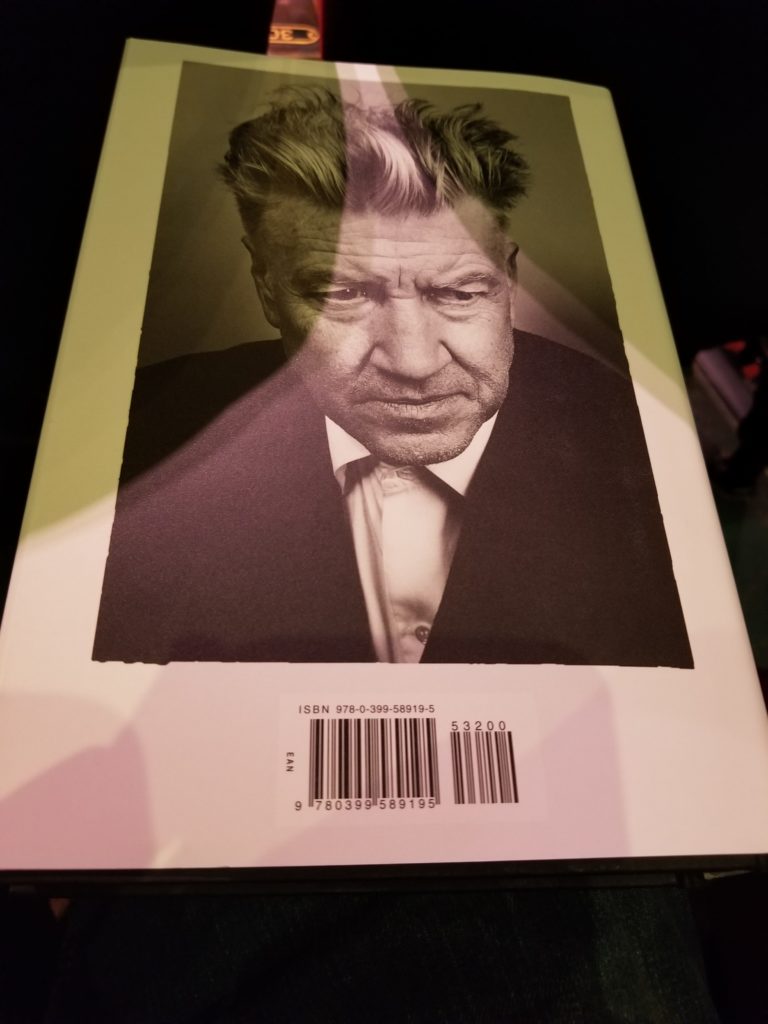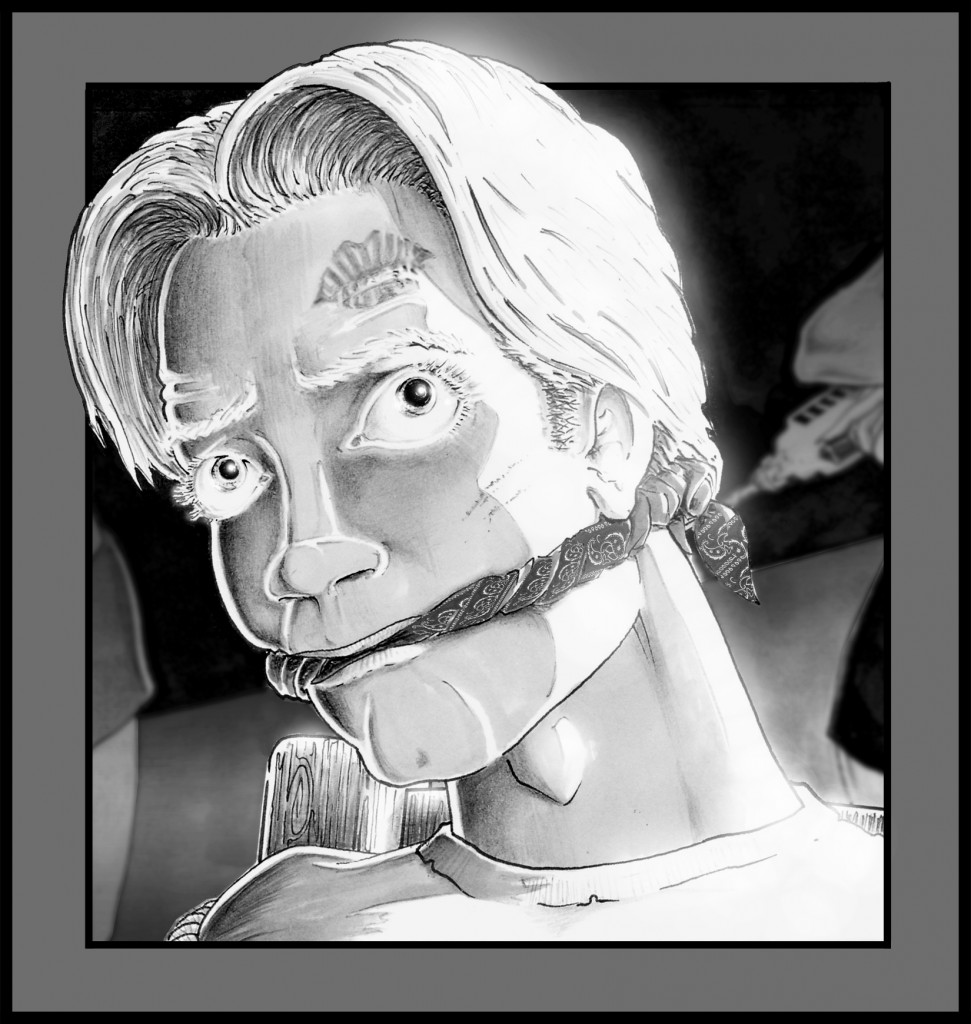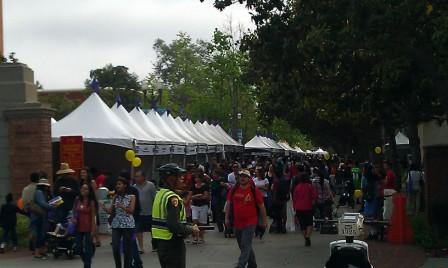Hey, so, how long’s it been since we’ve seen each other (because your screen is actually a two-way mirror)? A year? Two years? No doubt there’s a lot to catch up on, I mean, I have a kid in college now.
Clown college.
And he’s not my kid, he’s just someone I’ve paid to be on the inside–you know, for squirting-flower intel and floppy shoe discounts.
Anywho, I’m back because the Los Angeles Times Festival Of Books just celebrated its 30th anniversary and I’m proud to say I’ve been to at least 22 1/3 of them (I was overserved some Joyce back in 2006 and was “aggressively invited” to leave early.)
As was my tradition back in the salad days of blogging, today I’m posting some of the many writerly nuggets I heard during the two day event. If you can, read these while imagining you were as lucky as me to come upon a trio of small children at the fest’s Kids Area playing “Eye of the Tiger” on kazoos. That’s a true story.
“Every book I’ve ever written is about liars.”
“The greatest suspense stories are the ones where the protagonist sets out to solve a mystery and the mystery is them.”
“When we start penalizing people for trying [to write outside their lived experience], that’s when we have a problem.”
“Bruce Sterling said, ‘Cyberpunk is sci-fi about people who couldn’t afford spaceships.'”
“Sometimes when you’re granted your dream it can be great–but it can also be fraught.”
“People didn’t get into publishing to make money; they do it because they love books. They want to keep books alive.”
“My protagonist is a conscientious bastard.”
“It costs something to stand out and to fit in.”
[Re getting a bad review] “The heart has already been broken long before the book comes out.”
“The broader goal here is to get people to stop lying about everything.”
“The best part of storytelling is being human on the page.”
“Gen-Xers were reading ‘Flowers In The Attic’ in second grade and it was okay–now, parents are trying to ban everything.”
“Feelings don’t change from when you’re 12 years old to when you’re 50.”
“99% of women suffering [from] post-partum psychosis believe they are saving their kids when they’re actually killing them.”
“Immunity breeds impunity.”
“We can’t afford the ‘news is too upsetting’ mindset.”
“What we sacrifice with efficiency [in AI] is struggle. Struggle is how we learn. AI can create cognitive laziness.”
“I don’t think we have the right to ask people for forgiveness. All we can do is apologize.”
[America] has a ‘rise and grind’ mentality.”
“You can’t wait for it to get easier to jump into your life.”
“7th grade is where you find out how cruel you can be and still live with yourself.”
“I write because I have to, and I don’t know why I have to, like most diseases.”
“We look for meaning in stories the same way we look for meaning in a stranger’s medicine cabinet.”
“Art and politics are inextricably linked, If [politics] are absent, that is a political statement.”
“It’s exciting to make art and for people to tell me what they see.”
Who Said This Stuff: Jean Hanf Korelitz; Cory O’Brien; Alex Segura; Bruce Sterling; Natashia Deon; Joseph Earl Thomas; Dan Santat; Lisi Harrison; Jonathan Alter; Erwin Chemerinsky; Steven J. Aguilar; Gayle Forman; Sarah Enni; Leah Stecher; Jacquie Walters; Percival Everett


